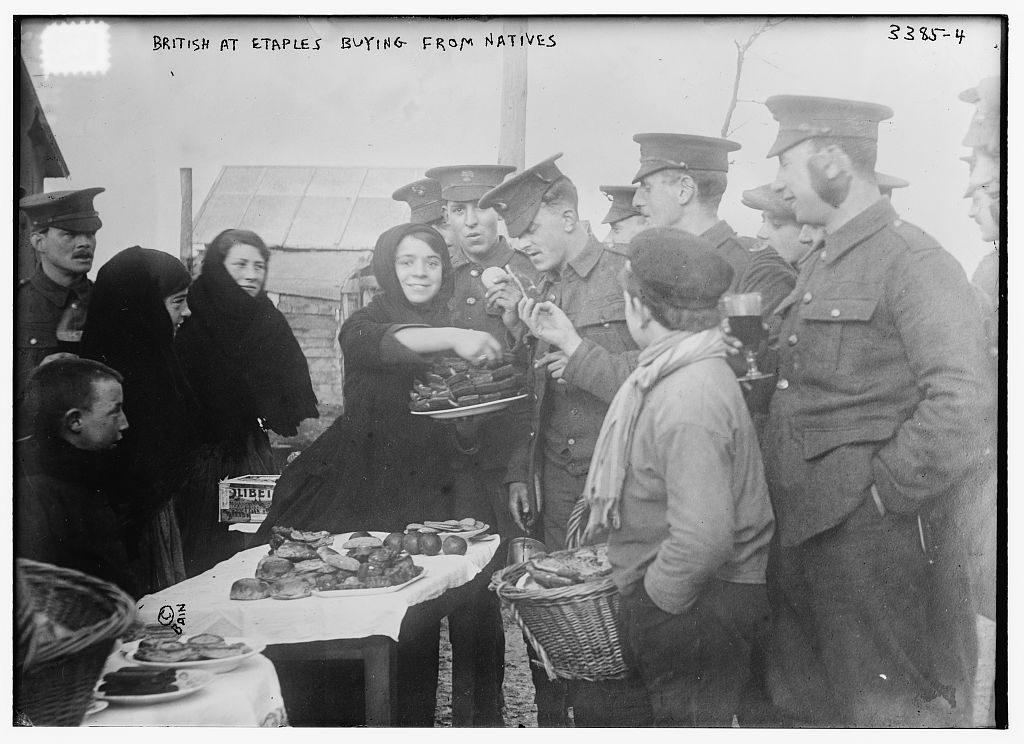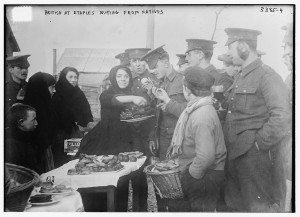Even with minimum pricing on its way, it’s not out of the question, and anyway, it’s an interesting challenge. Do the lower-priced wines match – can they match – with the kind of food you can put together on a budget on a Baby Belling? And the answer has to be, ultimately, yes.
It’s a lot harder these days to find bad wine at any price, and every supermarket, including Waitrose, can provide you with a bottle for about £6.00 that you’ll be able to enjoy. In the UK at the time of writing (April 2012), the Cooperative offers perhaps the best value in cheap wine. Their own brand fair trade Chilean range, incorporating a really quite excellent sauvignon blanc and an equally good merlot, alongside a perfectly acceptable chardonnay and a shiraz cabernet, is worth looking out for, each costing less than a fiver. It goes without saying that off licence bin ends are worth keeping an eye on, and if you have a lump sum to spend and time to plan, most mail order wine merchants will have very good 6 and 12 bottle cases at an affordable price level.
The classic wine flavours remain what they’ve always been – those established by the great London clubs in the eighteenth and nineteenth centuries. These were French, originally: Burgundy for white (chardonnays in the main) and Bordeaux for red (essentially merlot and cabernet sauvignon). Add the grassy New Zealand sauvignon blanc and just about everywhere’s syrah/shirazes, plus, when you can afford it, sparkling wine from southern English vineyards, and you have the beginnings of range. But this is on good days. What about the bad ones, when money runs low?
A lot of the best cheap food is Italian, which means that it’s worth familiarizing yourself with whatever range of low-priced Italian wines are available in your area.
Pasta with a tomato-based sauce is perhaps the ultimate cheap meal with a pedigree. If you can find canned San Marzano tomatoes, and run to Di Cecco dried pasta, some black pepper, garlic, an onion and a good olive oil, you’ve a classy treat in store, and only slightly less of one if you are looking at own brands and budget ranges, because these ingredients never really go wrong. Pair your pasta dish with a bottle of Italian primitivo red, or, if you can find it at a good price, barbera d’Asti. If you prefer white wine, then a pinot grigio should be relatively easy to track down within budget.
Pasta with pesto is the other great Italian quick delicious meal, perhaps dressed with toasted pine nuts and an extra splash of oil. But pesto is oddly difficult to pair off with an Italian wine. Instead, find a Chilean sauvignon blanc, a Chilean or Australian merlot, or a French burgundy chardonnay (much wine labelled “white burgundy” will work well here, whether or not it’s actually chardonnay or a blend of grapes).
Another cuisine we’ve featured on the Garreteer is Indian food, Indian as transmitted through the lens of the Indian restaurants that grace the towns and cities of the UK. It’s perfectly possible to pair curry, or similar spice-based sauced dishes, with wine, and in their different ways both the grassiness of a sauvignon blanc and the earthiness of a merlot can be made to work. But the great curry lagers, Cobra and Kingfisher, are so right, so appropriate, and so widely available that we’d recommend stumping up for a bottle of one of these and bringing it home. Cobra in particular – devised and brewed in the UK especially for drinking with Indian restaurant food – is a quite superb lager, light and refreshing but unlike classic Brit lagers in that it won’t bloat you or “turn”.
Similar rules apply to fish and chips. The famous Magpie’s Cafe in Whitby serves pints of bitter with its fish and chips, and this is the best policy to follow. If you can, learn who your local small brewers are, and bring home a couple of their bottles.
The other classic British core of the cheap meal is the baked potato. Until recently, tuna, mayonnaise and sweetcorn was a classic starter dressing for a baked potato, but the escalating price of canned tuna has taken it into the category of occasional treat. If you’ve just a potato, a little melted blue cheese – perhaps one of those little squares in silver paper some supermarkets offer – or simply melted butter, will work well paired with Chilean sauvignon blanc. But if you add cheese and baked beans, you’ll want to switich to a red wine, ideally – something with a strong flavour like a pinot noir or a zinfandel, but if those are priced out of question, go for a merlot. One drink that you won’t expect to go with a jacket potato, beans and cheese, but which works superbly well, is actually, of all things, dry sherry. Go for a fino or amontillado, and keep the rest of the bottle for aperitifs and cooking.
Time and hunger drive all of us to a snack meal from time to time. French bread and a small amount of the best cheese you can prise out of the shop is one way here, and until recently, in many major UK cities, you’d pair it with one of the “Petites Recoltes” from the Nicholas chain of off licences. But Nicholas have vanished from outside the M25, and remaining stocks of these little French local wines are running progressively low. But really, any French table wine will do – that kind of downmarket brackishness is actually what you want here. If you have a Waitrose within reach, their “Good Ordinary Claret” is perfect for these occasions (and its old fashioned label is useful too for any sort of “traditional British” types of evenings you might want to hold).
But then there are the days when you have had the time to cook properly, and the gentle homely perfume of a beef or chicken stew, three hours old in a slow oven, is creeping its way around your room or your flat. If you were in funds, you’d have gone out an hour ago to find a £20 bottle of wine whose lingering flavour would have heightened the mellow tenderness of your meat and vegetables. But you aren’t in funds, and instead you will want to turn to the softest, longest syrah, merlot or barbera you could come across. And it won’t matter: the stew will soon be done, and you’ll be spooning it out, thick and succulent, onto your plate, and what’s left behind in the pot will taste even better tomorrow. Let the rain lash at the window and the wind rock your curtains: crack the screwtop open and hear the first splash of wine in your glass. Light the candle stump and tune the radio. Enjoy.


We’ve found the secret of cheap wines(after we gave up making our own from the hedgerows and Boot’s kits) to be seeing a recommendation that a wine was v good value, trying a bottle and then, if we agreed, buying six or more. That requires both that you have storage space and that you can afford to lash out for six. Our sources of recommendations include
http://www.supermarketwine.com/
At the risk of stating the bleedin’ obvious, a useful strategy at that website is to click onto the Aldi wines. Every recommendation we’ve tried has been a success. (Unlike their bloody light bulbs, but that’s another story.)
Wahoo!
http://www.dailymail.co.uk/money/bills/article-2149153/3-59-red-wine-Aldi-voted-worlds-best.html